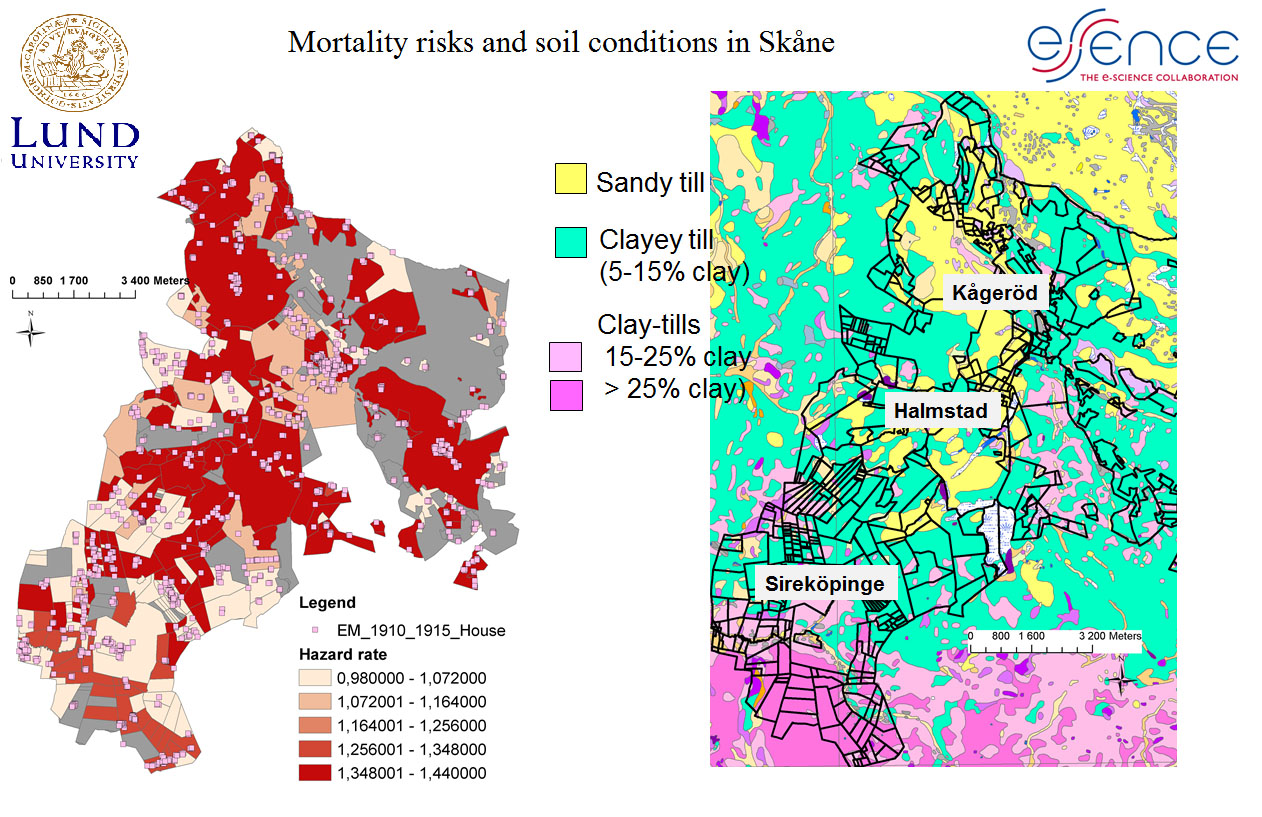Introducing the micro-level geographic context in historical demographic research
Abstract/BackgroundThe aims of demographic research are to study the short- and long-term impacts of external factors, such as the local environment and food prices, on families and households, in particular fertility and mortality. To support these studies researchers has been built up extensive demographic databases. Centre of Economical Demography (CED), Lund University has built up a demographical database SEDD during the last decades. This database contains demographic information about all persons that have lived in five parishes in Skåne from the 17th century and onwards. One shortcoming of this database has been that it has not included any detailed physical locations of the individuals.

Aims
The aim of the project is to introduce the micro-level geographic context in historical demographic analyses. These factors could for example be population density and closeness to wetlands (which both affect the level of exposure to infectious disease) as well as soil conditions (which affect the nutrition status of a rural population). By doing so we hope to find explanation of e.g. regional differences in mortality that cannot be explained by traditional demographic factors such as sex and social status.
Methods
To introduce the micro-level geographic context in historical demographic research three topics has to be treated. Firstly, a method is required to determine the detailed location of all individuals on e.g. yearly basis. The challenge here is that the historical maps are just snapshots in time. To improve the description of how the geography has changed in time we therefore use textual sources such as poll-tax registers and cadastral dossiers. Secondly, we need methods to quantify the geographic factors and thirdly, we need methods to integrate the quantified geographic factors into demographic analysis.
Research group
PI:Prof. Tommy Bengtsson
Centre of Economical Demography, Lund University
PI:Ass. Prof. Lars Harrie
Department of Physical Geography and Ecosystem Science, Lund University
Dr. Luciana Quaranta
Centre of Economical Demography, Lund University
Ass. Prof. Patrick Svensson
Centre of Economical Demography, Lund University
Links and references
Methods to create a longitudinal integrated demographic and geographic database on micro-level: a case study for five rural Swedish parishes, 1813-1914
Historical Methods, Vol. 48, Num. 3, pp. 153-173
HEDEFALK, F., L. HARRIE, L., and P. SVENSSON, 2014
Extending the Intermediate Data Structure (IDS) for longitudinal historical databases to include geographic data.
Historical Life Course Studies, Vol. 1, pp. 27-46. Available at: http://www.ehps-net.eu/article/extending-intermediate-data-structure-ids-longitudinal-historical-databases-include
Address to SEDD database: http://www.ed.lu.se/databases/sedd
Address to SEDD map service: http://map.sedd.ed.lu.se/
Description of summer school is found at: http://www.ed.lu.se/education/summer-course-2015